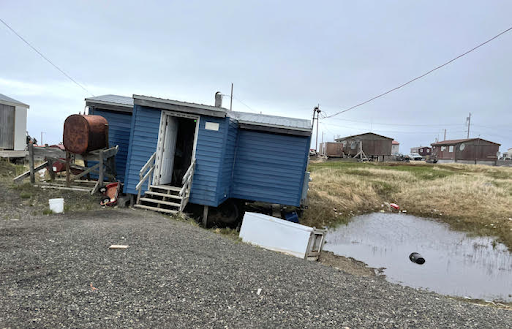-
September 28, 2022
UAF’s Billy Connor Travels to Point Lay to Explore Effects of Thawing Permafrost

PacTrans has funded a handful of different projects from the University of Alaska Fairbanks that look at various aspects of permafrost over the past several years. Most recently PacTrans’ Associate Director from UAF set out to Synthesize a best practice manual on Designing and Construction of Roadways and Airports over Permafrost. As average global temperatures continue to rise, permafrost is thawing at a fast rate, wreaking havoc on the infrastructure that is built up in and around it.
This past June, Mr. Connor was part of an interdisciplinary team that traveled to the Native Village of Point Lay (Kali) on the North Slope of Alaska, to observe, study, and discuss the effects of thawing permafrost on homes and critical infrastructure in the village. During the research visit, the team, “(1) studied permafrost properties and ground-ice conditions in three main terrain units (elevated areas, slopes, and drained-lake basins); (2) mapped the community with a drone to quantify the effect of thermokarst (the process by which ice-rich permafrost thaw produces characteristic depressions, e.g., pits and troughs) on village infrastructure; (3) conducted visual assessments on the effects of thawing permafrost on piling foundations; and (4) interviewed residents about their observations and experiences of permafrost thaw to better understand the impact of landscape changes as well as local concerns and information needs.”
“Point Lay has been identified as the second-most permafrost thaw-affected community in the state of Alaska (Denali Commission, 2019). The village has 82 residential units, housing a population of approximately 330. There are several North Slope Borough municipal structures and the Kali School that serve the community. Most of the residential buildings in the village are built on an elevated surface underlain by ice-rich permafrost that is susceptible to thaw and terrain subsidence. Issues associated with thawing permafrost have dramatically increased in the village during the last decade. Water and sewer lines have failed, homes are being affected by ground subsidence , the community’s freshwater drinking lake drained because of permafrost degradation in 2016, and one of their water storage tanks ruptured last winter.”


